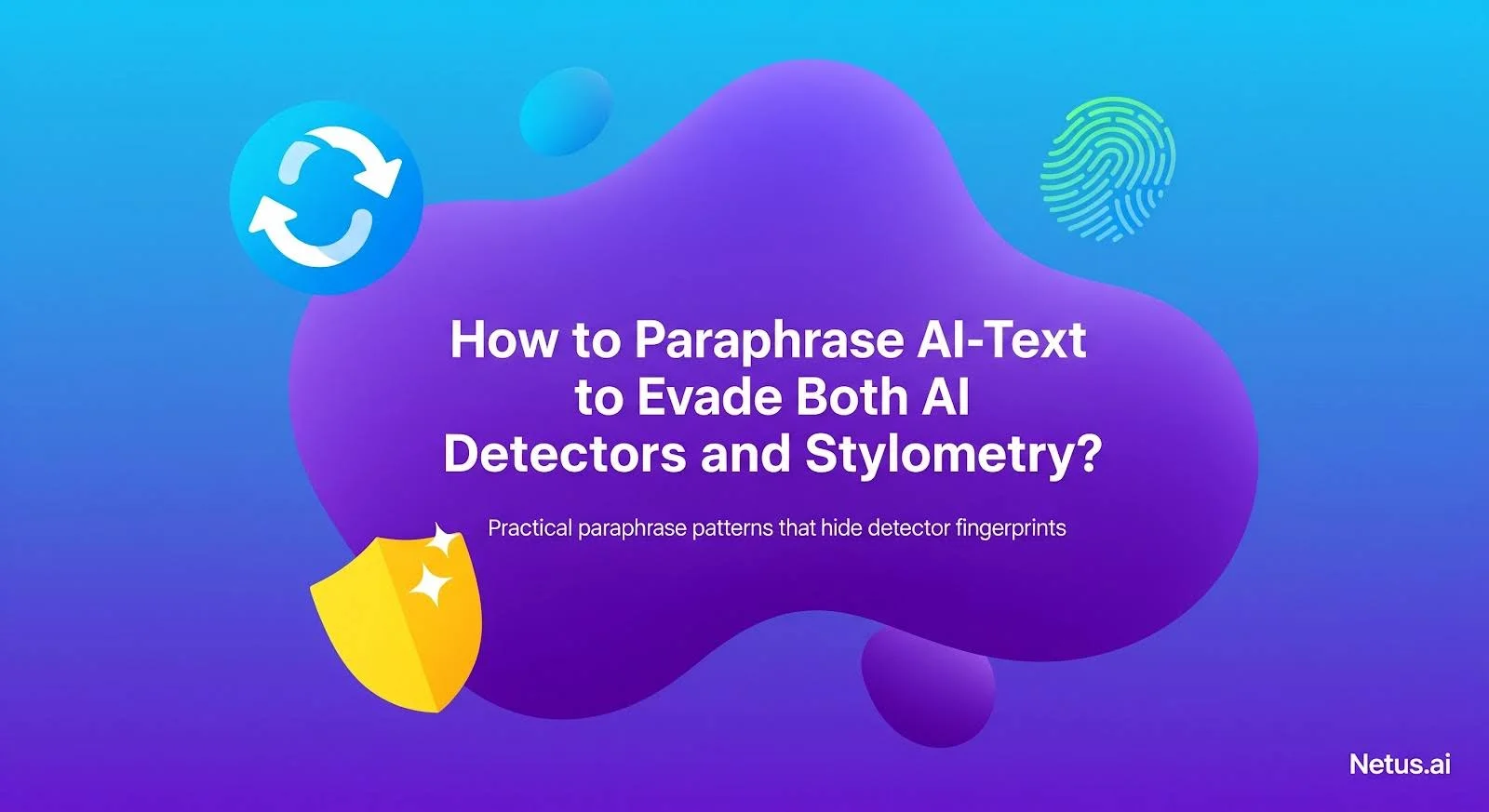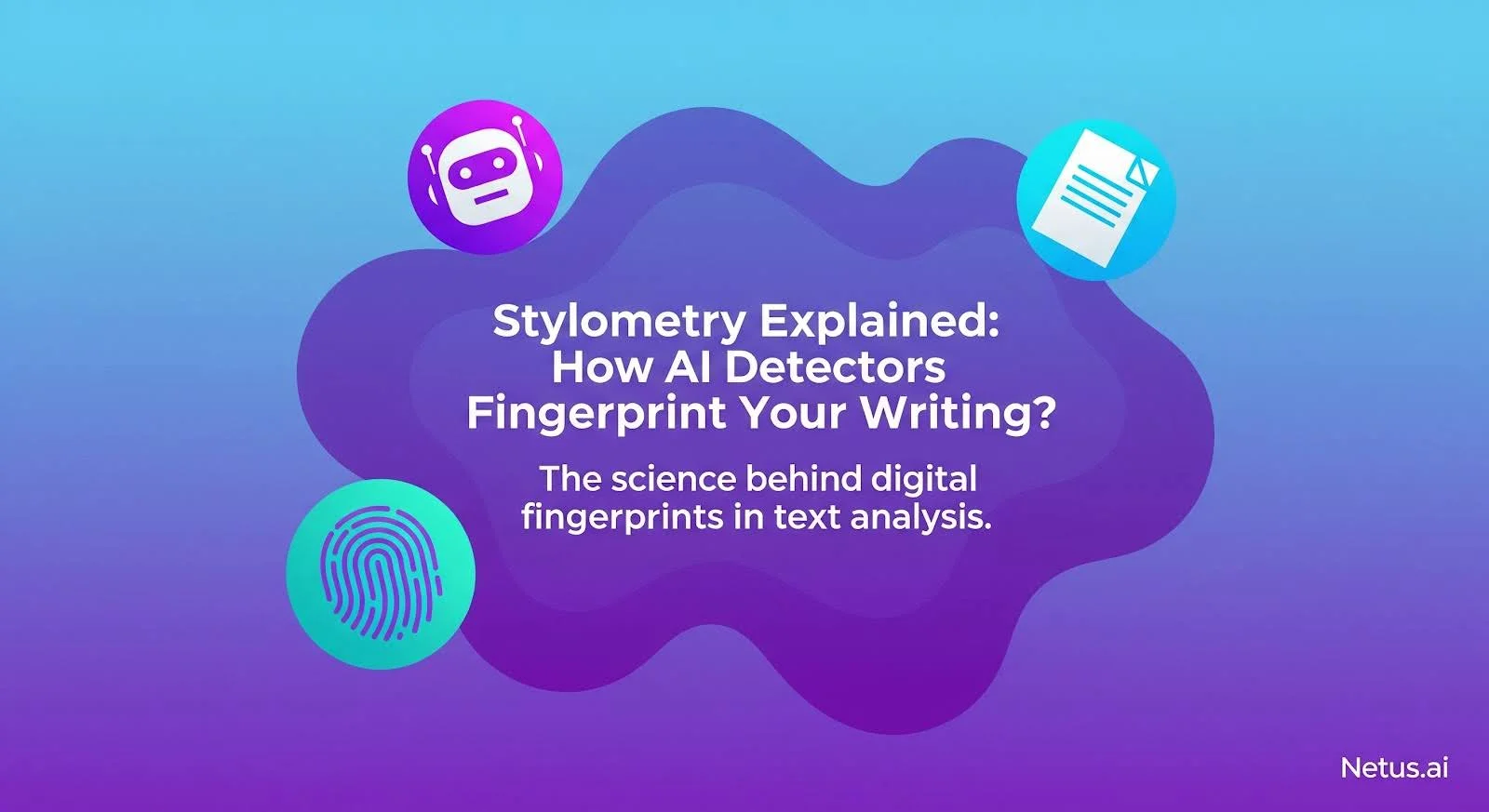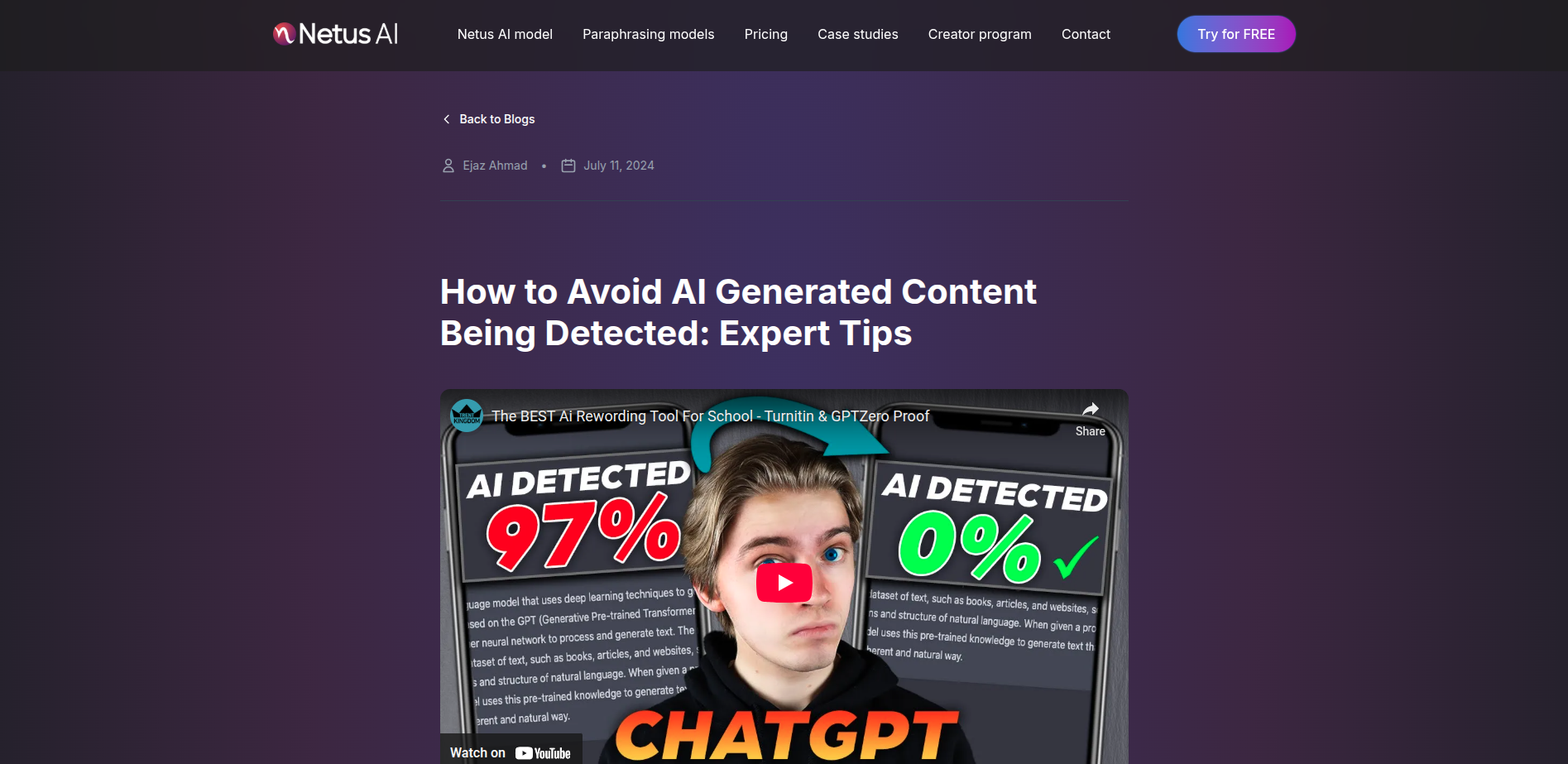AI writing assistants are ubiquitous, democratizing content generation but simultaneously triggering an arms race in detection. It’s no longer just about spotting the robotic phrasing of early models.
To pass AI detection, content must avoid AI patterns and stylometry, which exposes AI-generated human imitations.
These tools examine factors like perplexity, burstiness, preferred sentence structures and punctuation habits to identify non-human authorship.
Why "Just Paraphrasing" is a Death Knell?
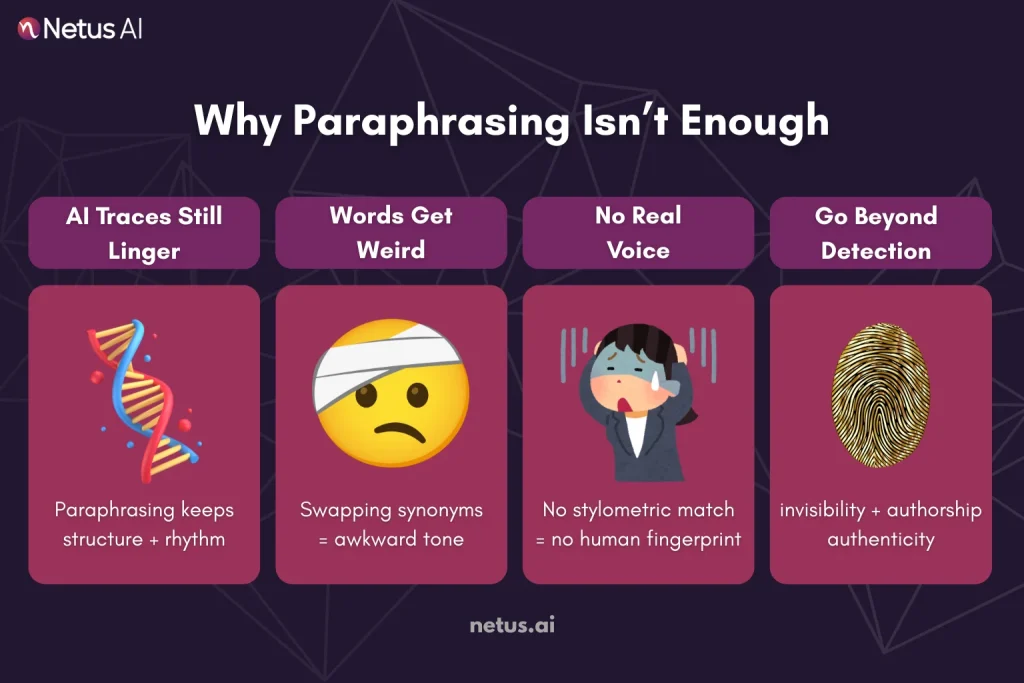
Running AI text through a basic synonym-swapper or even a standard paraphrasing tool is like putting a band-aid on a bullet wound. These methods often:
- Preserve AI Signatures: Core sentence structure, predictable flow and low “burstiness” remain untouched. Detectors easily see through superficial word changes.
- Introduce Awkwardness: Blind synonym replacement creates unnatural phrasing, raising human red flags (“This reads, off”).
- Ignore Stylometry: They do not add unique human stylistic markers. The result is generic, soulless text that stylometry can identify as not belonging to the claimed author.
The goal is no longer just tricking a detector for a moment. It’s about achieving true textual camouflage.
Mastering the Art of Deep Paraphrasing

Achieving this requires moving far beyond superficial changes. Here’s the professional’s approach:
1. Semantic Rewriting (The Core Principle)
- Don’t Swap Words, Reconstruct Ideas: Read the original AI output. Close it. Now, explain the core concept in your own words, as if teaching it to a colleague.
- Change Sentence Architecture: Break up long, complex AI sentences. Combine short, choppy ones. Alter the subject-verb-object flow.
- Vary Rhythm and “Burstiness”: Humans write with natural variation. Follow a long, complex sentence with a short, punchy one. Mix sentence structures (simple, compound, complex).
2. Stylometry Injection (Your Secret Weapon)
- Know Your Target Voice: Are you writing as yourself? Or mimicking a client/colleague’s style? Immerse yourself in samples of the target human’s writing. Note their:
- Sentence Length Preferences: Do they favor concise or elaborate sentences?
- Punctuation Quirks: Do they use em-dashes frequently? Semicolons? Lots of commas? Minimal commas?
- Word Choice: Do they use specific jargon? Favor certain verbs or adjectives? Avoid contractions? Use slang?
- Tone & Formality: Academic? Conversational? Authoritative? Witty?
- Consciously Mimic: While rewriting semantically, deliberately incorporate these observed stylistic elements. Use their favorite transition words, replicate their level of formality, adopt their rhythm.
3. Leverage Tools Strategically (Don't Rely Blindly)
- Advanced Paraphrasers as a Starting Point: Do not use AI rephrasing tools like QuillBot, Wordtune or Claude 3/Opus.
- AI Detectors for Feedback, Not Validation: Run your rewritten text through detectors ZeroGPT. Use the results diagnostically. If flagged, analyze why (e.g., “low burstiness detected”).
- Bypassers with Caution: Tools like UndetectableAI or HumanizeAI claim to humanize text. Test them rigorously against both AI detectors and stylometry analysis on known human samples.
4. The Irreplaceable Human Touch (The Final Step)
- Brutal Editing: Scrutinize every sentence. Does it sound like something a real person (specifically, your target voice) would actually say or write? Fix awkward phrasing, jargon misuse and unnatural transitions.
- Inject Personality & Nuance: Add subtle opinions, context-specific examples or slight conversational flourishes, elements AI often struggles with authentically.
- Read Aloud: This catches unnatural rhythm, repetition and phrasing that appears fine but sounds robotic.
Beating the double threat demands more than a quick fix. It requires deep semantic understanding, conscious stylistic emulation, strategic tool use and meticulous human editing.
The Paraphrasing Pitfalls That Scream "AI!"
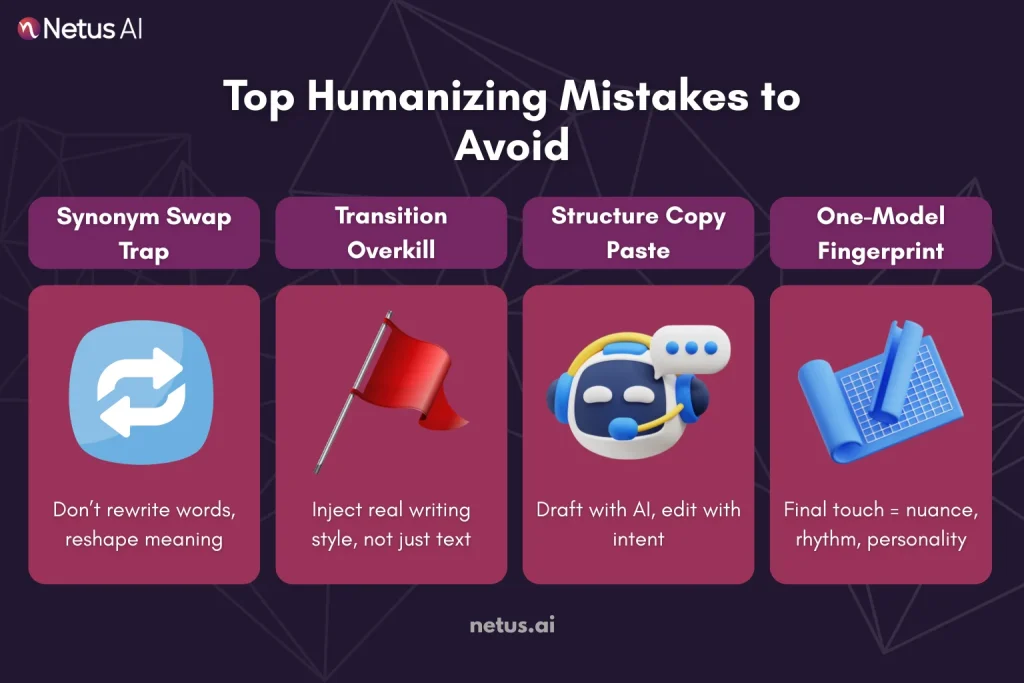
You think you’re being clever. You run your ChatGPT output through a paraphrasing tool, swap a few words and hit submit. Then the dreaded flag appears.
Mistake #1: Synonym Swapping on Steroids (Zero Structural Variation)
- The Crime: Opt for simpler words (e.g., “use” over “utilize,” “show” over “demonstrate”) to maintain sentence length and flow.
- Why It Fails:
- AI Detectors: See unchanged “burstiness” (uniform sentence lengths) and “perplexity” (predictable word patterns).
- Stylometry: Reveals jarring stylistic inconsistencies. Your unique voice doesn’t magically emerge from replaced nouns.
- The Tell: Reads like a thesaurus vomited on a template. Feels mechanically altered, not organically rewritten.
Mistake #2: The "Safe Transition" Overdose
- The Crime: Vary sentence beginnings; avoid always starting with transition words.
- Why It Fails:
- AI Detectors: Flag unnatural transition density and predictable sequencing.
- Stylometry: Creates a monotonous, artificial rhythm utterly unlike how any specific human writes consistently.
- The Tell: Reads like a stilted academic paper from the 1950s. Devoid of natural flow or conversational cadence.
Mistake #3: Structural Rigidity (Vocabulary Mask, Same Frame)
- The Crime: Reword sentences but maintain sentence count, order and core grammatical structure (e.g., SVO).
- Why It Fails:
- AI Detectors: Analyze deep syntactic patterns. Preserving the core structure preserves the AI’s statistical signature, regardless of surface-level words.
- Stylometry: Your unique style is expressed in how you build ideas, not just the words you pick.
- The Tell: The text feels like a “paint-by-numbers” version of the original. The ideas progress identically, just with different adjectives.
Mistake #4: Model Monogamy (No Stylistic Adaptation)
- The Crime: Rewriting AI text with the same AI without human editing will still trigger AI detection and stylometry.
- Why It Fails:
- AI Detectors: Advanced models have subtle, identifiable quirks in how they phrase concepts, even after paraphrasing.
- Stylometry: This is the biggest failure. It’s an “AI-humanized” fingerprint, easily distinguishable from authentic human variation.
- The Tell: AI writing has a consistent style that shows it’s from AI, unlike the varied ways humans write.
Superficial changes are lipstick on a robot. To evade AI detection, one must restructure the text with a human writer’s distinct rhythm and style.
NetusAI: Stylometry-Safe Rewriting in Practice
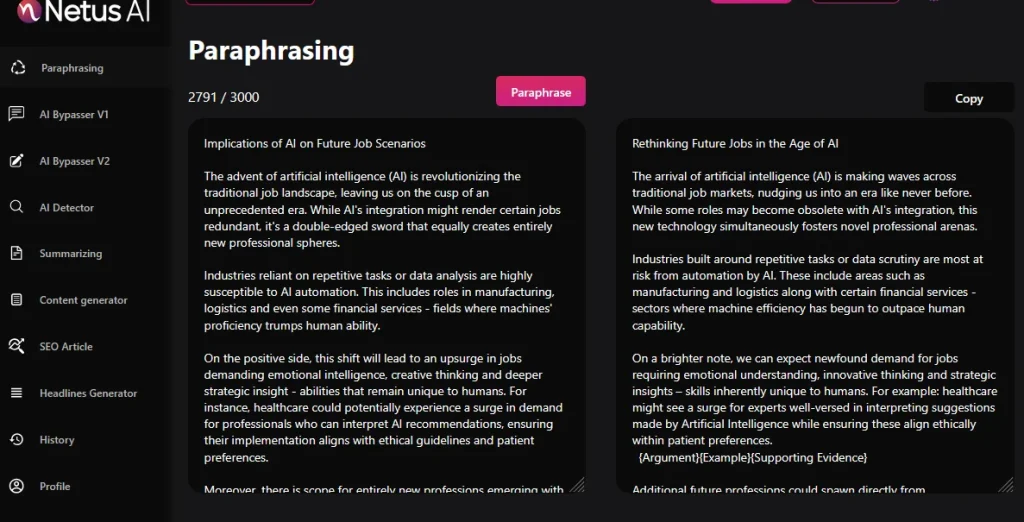
To effectively evade AI detection and stylometry, paraphrasing requires more than simple word changes, a capability NetusAI tools provide.
The NetusAI Paraphraser rewrites content, restructuring sentences, adjusting tone and eliminating detectable patterns without sacrificing clarity.
But what makes Netus stand out is the paraphrasing + detection synergy:
This software provides a paraphrasing capability of up to 3,000 characters, generating output that is safe from stylometric analysis. It offers real-time AI detection and a bypass engine to circumvent both AI detectors and authorship attribution tools.
NetusAI’s Paraphraser and Bypasser offer superior content safety for rewriting AI drafts, templated sections or anonymizing writing style.
It’s not just a rewriter. It’s your stylometry-safe rewrite lab, built for SEO survival in a detection-first web.
Final Thoughts
Evading AI detectors and stylometry isn’t about tricking systems, it’s about restoring authenticity.
As AI content grows, human-written text with clarity, rhythm and originality becomes more valuable. Paraphrasing is your first line of defense but only when done right, with structure, nuance and intent.
That’s exactly where NetusAI shines. Unlike basic rewriters that just swap words, NetusAI’s paraphrasing tool goes deeper, restructuring syntax, breaking pattern uniformity and preserving meaning without robotic residue.
AI-assisted writing isn’t optional, it’s the norm. What separates content that ranks from content that gets buried is how well it blends machine speed with human feel. NetusAI gives you the edge to do exactly that, safely, effectively and at scale.
FAQs
Stylometry is the statistical analysis of writing style. AI detectors and forensic tools use it to fingerprint patterns like sentence structure, rhythm and word choice.
No. Basic paraphrasing only swaps synonyms or changes sentence order, which isn’t enough to fool advanced stylometry tools. You need structural, tonal and rhythmic changes to disrupt detection signals effectively.
NetusAI combines a paraphrasing engine with real-time AI detection and stylometry-safe rewriting. It restructures sentences beyond surface edits, maintaining meaning while neutralizing patterns that trigger detection tools. The result: content that reads naturally and scores “Human” on multiple detectors.
Unlike generic paraphrasers, NetusAI is optimized for SEO, stylometric variation and AI safety. It doesn’t just reword, it rethinks flow, tone and structure while preserving clarity and purpose.
Not always. To truly stay safe, you should pair paraphrasing with personalization, fact-checking and prompt-based restructuring.
Start with a solid prompt, generate your draft, then run it through NetusAI’s paraphraser. Detect AI-risk, then adjust tone and variation, rescanning until “Human.”

